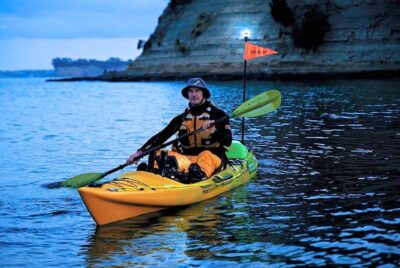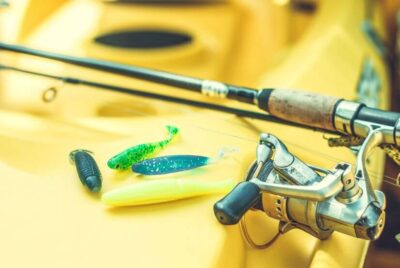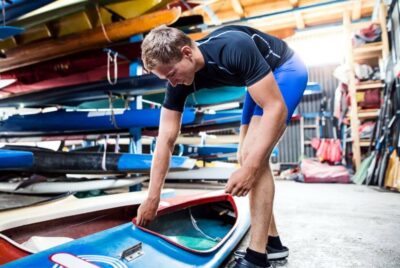How to Kayak: Navigating Basics and Advanced Techniques
Kayaking is more than just a water sport; it’s a journey into nature, an exploration of the self, and a fantastic way to unwind. For many, it becomes a lifelong passion that offers a blend of adventure, tranquility, and physical challenge. Whether you’re drawn to the gentle rhythm of paddling on a calm lake or the thrill of navigating rapids, this comprehensive guide on how to kayak is designed to usher you into the world of kayaking. From understanding the basics to diving into advanced techniques, I, as an avid kayaker, am here to share my insights and enthusiasm with you.
Getting Started with Kayaking
Before you even dip your paddle into the water, there’s one crucial decision you need to make: selecting the right kayak. Your choice will shape your kayaking experience, ensuring it’s enjoyable, safe, and suited to your preferences.
Types of Kayaks
- Recreational Kayaks: These are the most common types, perfect for beginners and casual paddlers. They’re typically wider, providing stability, and are ideal for calm waters like lakes and mild rivers.
- Touring Kayaks: Designed for longer trips on open waters, these kayaks have a sleeker design, allowing for faster movement and better tracking. They also often come with storage compartments for multi-day trips.
- Whitewater Kayaks: For those seeking thrills, whitewater kayaks are designed specifically for rough waters and rapids. They are shorter and more maneuverable, allowing paddlers to navigate through challenging terrains.
- Sea Kayaks: Built for the open ocean, sea kayaks are long and narrow, designed to handle waves and offer storage for longer journeys.
- Sit-On-Top Kayaks: Unlike traditional kayaks where you sit inside a cockpit, these kayaks allow you to sit on a molded-in depression on top. They’re great for warmer climates and are often used for fishing or diving.
- Inflatable Kayaks: Portable and convenient, inflatable kayaks can be packed down for easy transport. While they might not offer the same performance as hard-shell kayaks, modern designs have significantly improved their durability and stability.
Essential Kayaking Gear
To have an enjoyable and safe time on the water, certain gear items are non-negotiable. Here’s a breakdown of what you’ll need, ensuring you’re well-prepared for any paddling adventure:
- Personal Floatation Device (PFD)
- Paddle
- Sprayskirt
- Dry Bag
- Footwear
- Clothing
- Bilge Pump
- Safety Whistle

Mastering the Basics
The foundation you lay now will determine the experiences you’ll have on the water. Whether it’s ensuring safety or understanding how to maneuver effectively, getting these basics right will pave the way for countless memorable adventures.
Safety First
Prioritizing safety isn’t about being overly cautious—it’s about ensuring that your kayaking journeys are memorable for the right reasons.
- Always Wear a PFD: As mentioned earlier, a Personal Flotation Device is crucial. It’s not just for emergencies; it provides buoyancy and helps reduce fatigue.
- Inform Someone: Before heading out, let someone know your planned route and expected return time. It’s a simple step that can be vital in case of unexpected events.
- Weather and Water Conditions: Always check the weather forecast and be aware of water conditions. Winds, tides, and currents can significantly impact your kayaking experience.
- Stay Hydrated and Protected: Carry enough water and wear sun protection. The reflection from the water can amplify sun exposure.
- Practice Capsize Recovery: While nobody plans to capsize, it’s a potential reality of kayaking. Practice getting back into your kayak in controlled environments to be prepared.
- Label Your Kayak: Add a label to your kayak with your name, phone number, address and emergency contact information. Be sure it’s legible, written in permanent marker and cover it in clear tape so it can still be read if it gets wet. Securely attach it to your kayak so if you capsize, it won’t fall off.
Paddling Techniques
The way you paddle can drastically influence the effort you expend, the distance you cover, and the control you have over your kayak. Here are the most basic paddling strokes you need to master.
Basic Strokes
- Forward Stroke: The most common stroke, it propels the kayak forward. It’s initiated from the torso, not just the arms. The paddle blade enters the water near your toes and exits by your hips.
- Reverse Stroke: Essentially the forward stroke in reverse. Used for moving backward or slowing down.
- Sweep Stroke: This stroke helps turn the kayak. For a right turn, the left paddle blade makes a wide arc from the bow to the stern. For a left turn, use the right blade in the opposite manner.
- Draw Stroke: Used to move the kayak sideways. Reach out to the side, submerge the paddle blade, and pull it towards the kayak.
Tips to Conserve Energy
- Engage Your Core: Power should come from your torso, not just your arms. This utilizes larger muscle groups, conserving arm strength.
- Maintain a Relaxed Grip: Gripping the paddle too tightly can tire you out quickly. Keep a relaxed, but firm grip, letting the shaft rotate slightly in your hands as you stroke.
- Paddle at a Steady Rate: It’s tempting to paddle hard and fast, but a steady, rhythmic pace will help you conserve energy and cover distances more efficiently.
- Use the Right Blade Size: Larger blades move more water but require more effort. Smaller blades are gentler on the joints but might require more strokes. Find what works best for you.
- Take Breaks: When paddling for extended periods, it’s okay to let your kayak glide once in a while. Stretch, hydrate, and then continue.
Kayaking Etiquette
Just like there are unwritten rules when hiking or using shared outdoor spaces, kayaking comes with its own set of etiquettes. These guidelines aren’t just about being polite; they often overlap with safety and ensuring everyone can enjoy their time on the water. Here’s what you should keep in mind:
- Right of Way: Much like on the road, there are right-of-way norms on the water. Generally, larger vessels like ships and motorboats have the right of way over kayaks. Among kayakers, those paddling downstream typically have the right of way over those coming upstream.
- Maintain Distance: If you’re kayaking in a popular area, be respectful of others’ space. Avoid paddling too close to other kayakers, fishermen, or swimmers. Everyone is out to enjoy nature, so give them the space to do so.
- Protect the Environment: Leave no trace. Whether it’s snack wrappers or beverage containers, pack out what you pack in. Respect wildlife by observing from a distance and not feeding animals. If you spot trash floating around or on the shores, consider picking it up—even if it’s not yours.
- Noise Levels: Part of the allure of kayaking is the serenity of being on the water. Keep noise levels down, whether it’s music, loud conversations, or other potential disturbances. It’s not only respectful to other paddlers but also to the wildlife that might be nearby.
- Assist Others: The kayaking community is known for its camaraderie. If you see someone struggling, especially beginners, offer help or advice. Whether it’s assisting with a capsized kayak or sharing a tip, a little kindness goes a long way.
- Launching and Landing: When entering or exiting the water at busy launch points, be quick and efficient. If you need time to adjust your gear or get ready, do it away from the launching zone so others can access it.
- Respect Private Property: It’s possible to encounter private lands or properties during your kayaking adventures. Ensure you’re not trespassing or accessing restricted areas. Use public launch points and respect any posted signs.
- Know and Follow Regulations: Different regions may have specific regulations—whether it’s about fishing, camping, or even kayaking. Familiarize yourself with local rules and abide by them.

Advanced Tips and Tricks
As you evolve from a novice to a seasoned kayaker, there are techniques and practices that can help you tackle more challenging waters and undertake longer journeys. Mastering these will not only enhance your experience but also ensure you tackle these advanced situations with safety in mind.
Handling Rough Waters
Navigating choppy waters, whether due to wind, currents, or rapids, is both thrilling and challenging. Here are some strategies to help you paddle with confidence:
- Understand Water Dynamics: Before tackling rough waters, take time to understand the dynamics. Are there underlying rocks? How do the currents flow? Knowledge of the area can provide insights into how water behaves, helping you anticipate its movements.
- Keep a Low Center of Gravity: In rough waters, stability is key. By keeping your weight low and centered, you can better navigate waves and rapid changes in water movement.
- Bracing: This technique involves using your paddle as a support against the water to stabilize your kayak. A low brace (using the back of the paddle blade against the water) and a high brace (front of the paddle blade against the water) can prevent capsizing in turbulent conditions.
- Edging the Kayak: This means tilting it slightly to one side. When done correctly, edging helps you turn more effectively in rough waters without losing stability.
- Stay Calm: It might sound cliché, but keeping a clear head is paramount. Panic can lead to poor decisions. Rely on your training, breathe deeply, and handle one challenge at a time.
Long-Distance Kayaking
Paddling long distances is both a test of endurance and a chance to truly immerse yourself in the kayaking experience. Here’s how to make the most of it:
- Plan Ahead: Know your route. Research potential camping spots, water refill points, and any challenges you might encounter. Having a clear itinerary can make your journey smoother.
- Pace Yourself: It’s not a sprint; it’s a marathon. Start at a comfortable pace, and ensure you take regular breaks to rest, hydrate, and eat.
- Pack Smart: Every additional weight can make paddling harder. Pack essentials, use lightweight equipment, and ensure everything is secured and waterproofed.
- Stay Oriented: A GPS device, a map, or a compass is vital. In vast water bodies or similar-looking coastlines, it’s easy to get disoriented.
- Listen to Your Body: Pushing through minor aches is one thing, but if your body signals distress—be it exhaustion, dehydration, or injury—address it immediately.
- Weather Watch: Over longer distances, weather conditions can change dramatically. Stay updated with forecasts and be prepared to adjust your plans accordingly.
- Practice Efficient Paddling: The more efficient your technique, the less energy you expend. Refine your strokes, engage your core, and ensure you use your entire body rather than just your arms.
Conclusion
Preparation is your trusted ally, and respect for the water is your guiding principle. But more than anything, kayaking is about cherishing the moment, absorbing the beauty around you, and understanding that every journey, no matter how brief or extensive, contributes a unique chapter to your life’s story. As you embrace this enthralling world, remember the vastness of possibilities that lie ahead. Every paddle stroke is a new memory, a new lesson, and a step closer to becoming one with the water. Dive deep into this adventure, and let the ripples of your kayak guide you to unparalleled horizons.
FAQs
Q: Is kayaking suitable for all ages and fitness levels?
A: Absolutely! Kayaking can be adapted for various ages and fitness levels. For beginners or those seeking a more relaxed experience, calm waters like lakes or slow-moving rivers are ideal. However, it’s essential to ensure children and seniors have the proper safety equipment and are always supervised.
Q: How do I choose the right kayak for my needs?
A: When selecting a kayak, consider where you’ll be paddling (lakes, rivers, sea) and your kayaking goals (recreation, fitness, exploration). For beginners, recreational kayaks are a great start due to their stability. As you gain experience, you might explore other types like touring or whitewater kayaks based on your interests.
Q: Can I kayak alone as a beginner?
A: While kayaking alone can be peaceful, beginners are advised to paddle with a buddy or a group. Having someone experienced with you can provide guidance, ensure safety, and assist in any unexpected situations.
Q: What should I do if my kayak capsizes?
A: First, don’t panic. If you’re wearing a proper PFD, you’ll float. Try to hold onto your paddle and your kayak. If you’ve practiced re-entry, attempt to get back into your kayak. If not, swim with your kayak to the nearest shore or signal for help. It’s always recommended to learn capsize recovery techniques in controlled environments before venturing out. Consider taking a class near you – if that is not available watch some videos and dry practice the techniques before getting on the water.
Q: How do I maintain and store my kayak when it’s not in use?
A: After each use, rinse your kayak with fresh water, especially if you’ve been in salt water. Ensure it’s dry before storing to prevent mold or mildew. Store it in a cool, shaded area, preferably off the ground. If stored outside, use a protective cover to shield it from UV rays and weather elements.





